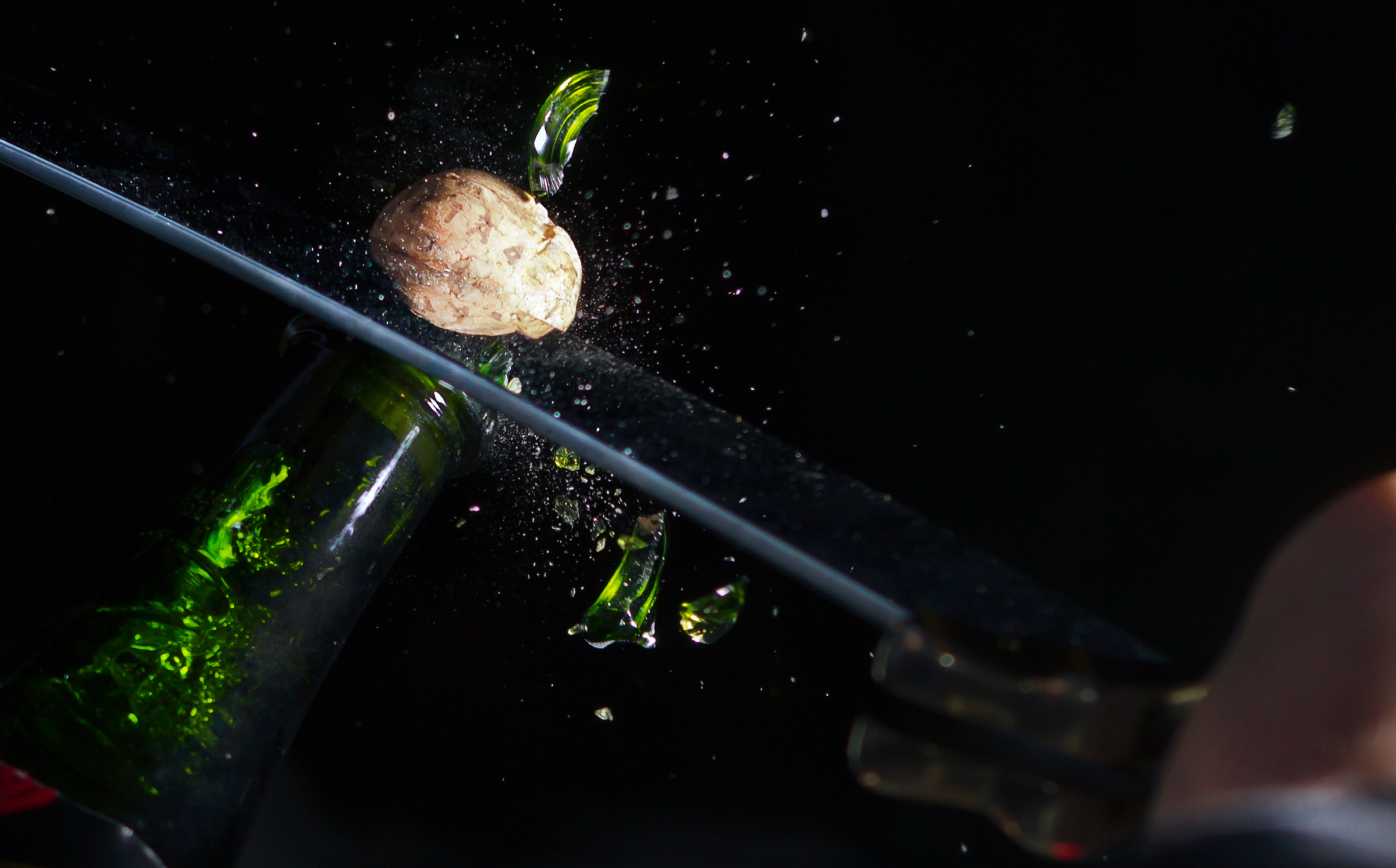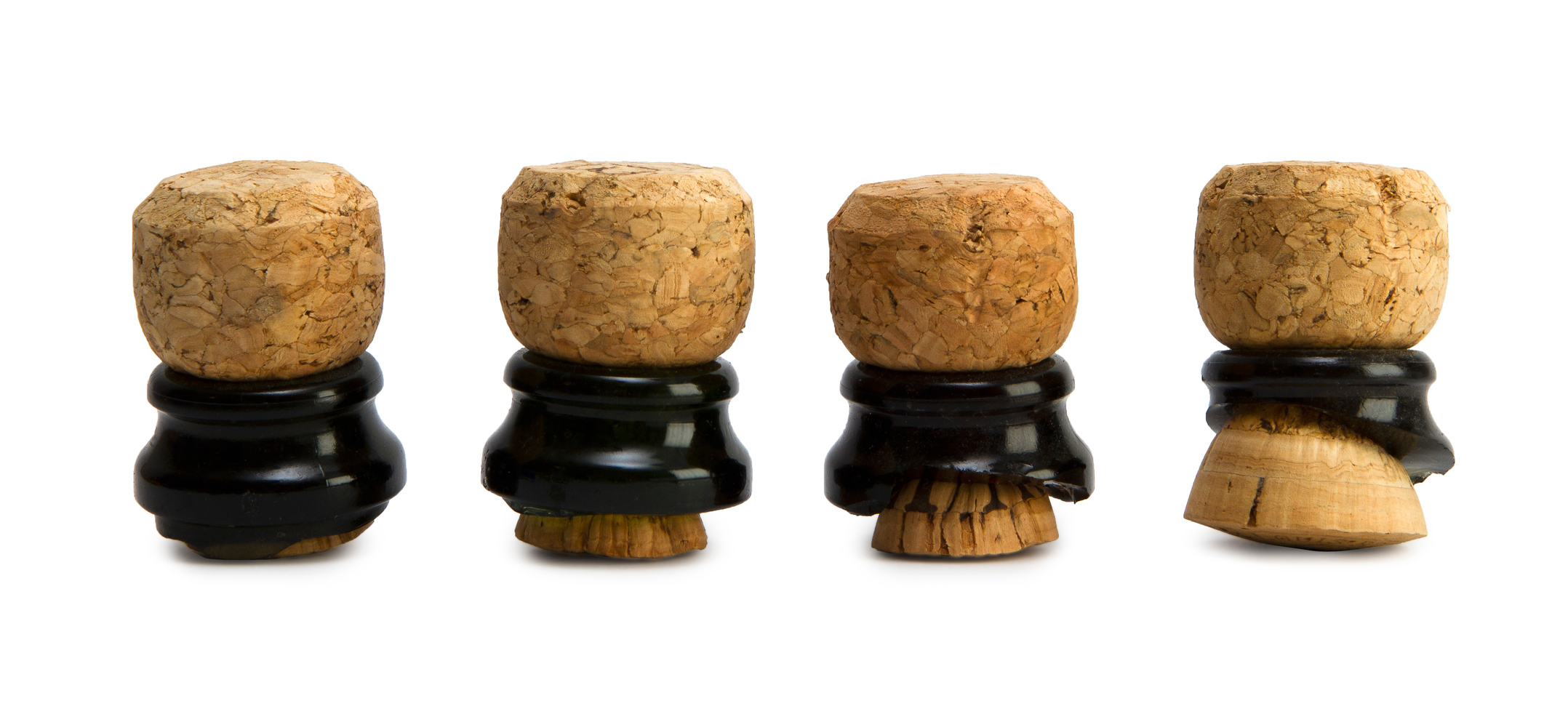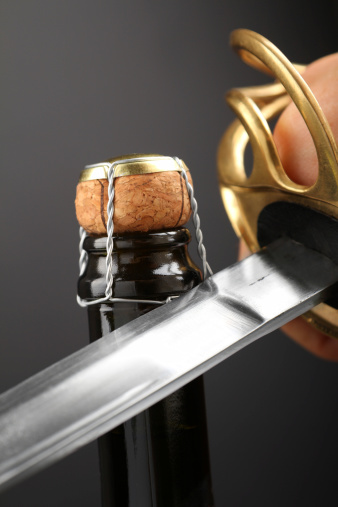Everything You Need To Know To Saber A Champagne
Announce at a party that you're going to open a bottle of Champagne and people will turn their heads. Announce you plan to do it with a sword, and crowds will surely gather.
The method of sabering a bottle—sabrage, if you're feeling fancy—dates back to the days of Napoleon. In both celebration and defeat, the Emperor's men would drink Champagne, and the famous Hussar cavalrymen learned to use their swords to lop off the heads of both bottles and infantry without dismounting. Legend holds, however, that the real reason the method was invented was the same reason all party tricks are invented: to impress a woman. Madame Clicquot—the 27-year old widow and proprietor of a large, inherited Champagne business—liked to entertain the officers of Napoleon's army as they passed through. After she presented each a bottle as they left for battle, the men would return a parting salute: a shower of Champagne, sabered on horseback as they rode away.
Sabrage works because the pressure inside a bottle of sparkling wine is so great that only a small imperfection in the glass will cause it to break. Striking the bottle at its weakest spot—where the two halves of the bottle come together and meet the ring around the cork—creates a small fracture that quickly propagates around the neck and separates the top cleanly from the body. Propelled by the internal pressure, the cork—with glass collar intact—takes flight, and the wine starts to flow. Done well, there should be minimal spillage, and no dangerous shards of glass in anyone's drink.
Does sabering a bottle make the wine taste better? No. Does it make the bubbles last longer? No. Does it make you look like a badass? Hell yes.

For a successful sabrage, there are two obvious needs.
Wine
You don't have to spring for true Champagne—the pricey stuff from the northeast corner of France—but you should choose a bottle of something made in the méthode champenoise. Sparkling wine made in this traditional method is fermented once in large vats (to turn the grapes into wine), then fermented again in-bottle (to add bubbles that dissolve into the wine). The natural carbonation method makes big, delicious bubbles, but it's an expensive and labor intensive process. Some styles of sparkling wine (like prosecco) are instead made by pumping carbon dioxide into a still wine just before corking. This wine can still be tasty, but it won't pack enough oomph for a successful sabering.
For balling on a budget, pick up a nice Spanish Cava (Segura Viudas at $10 a bottle is a great bargain) or a higher-end American sparkler like Gruet at $15. Avoid cheap domestic brands and prosecco.
Saber (or a knife)
You're not a Hussar, so you probably don't know how to use a sword. Luckily, a standard chef's knife will do. When sabering, you don't need a sharp blade. The flat, dull back edge of a hefty kitchen chopper will provide a better impact than a thin scabbard.
If you're thinking of making a habit of opening bottles this way, there are some nice ceremonial sabers on the market, or you can do what chef/scientist Dave Arnold did and make a plate metal pimp ring.
Once you've got your supplies, there are several tips.
Step 1
Keep the bottle as cold as possible. Keep the bottle refrigerated overnight, or submerge the entire bottle in ice, neck first for 30 minutes. A warm bottle of sparkling wine has bubbles that will want to come out of solution faster, leading to more mess. A cold bottle will break more cleanly without gushing.
Step 2
Remove the foil and remove or adjust the cage. Dry your bottle thoroughly, and remove the foil from the top. Make sure that all sticky spots or labels are cleared away. Note that the metal cage—the bit holding the cork on—tucks in below the bottom edge of the ring around the cork. When the saber strikes the lip, we want to have a clear shot, so untwist the cage and get it out of the way. Either remove the capsule completely, or, if you're married to the cage aesthetic, move it up and tighten it back down around the upper part of the ring, leaving the lower part naked.
Once the cage is off, be careful! Don't point the bottle at others or the fine china, and keep your thumb over the cork. Otherwise, the pressure inside may naturally pop the top (and pre-empt your show).
Step 3
Locate the seam, and hold the bottle at a little less than a 45-degree angle. Don't aim it too high or too low, and rotate the bottle so that the seam where the two halves of the bottle come together is facing up. Hold the knife in your dominant hand and the bottle in your non-dominant hand. It's convenient to put your thumb in the punt of the bottle—the indent on the bottom—so that your fingers are all well out of the way.
Step 4
Run your saber along the seam, keeping it (almost, but not-quite) flat against the bottle and hitting the lip squarely with the back of the blade. It takes less force than you'd guess, but the key is hitting the lip directly and following through on your swing without hesitation. If you arc your saber, you'll hit the lip at an angle, directing some of the force in the wrong direction, and if you hit too hard or too flat, your blade might jump over the lip. If you don't get it on the first try, shake it off and try it again.
Remember, practice makes perfect. So what if it's Tuesday and you're alone in your apartment? Give it a go, and in no time you too can saber wine to toast victory and woo widows (or whatever it is the kids are into these days).


